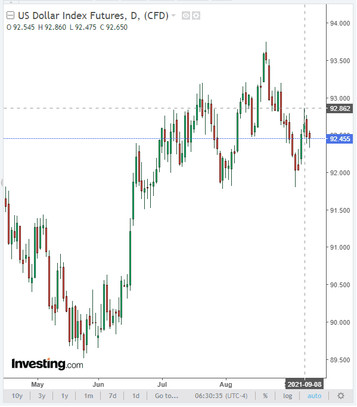The British pound did little to respond to the unexpectedly weak Office of National Statistics report released early in the European session today. According to this report, in July, monthly GDP growth slowed to +0.1% (against the forecast of +0.6% and growth of +1.0% in June).
At the same time, the pound was supported by positive data on industrial production, also published this morning. This indicator increased by +3.8% in July (on an annualized basis), +0.8% above market expectations. On a monthly basis, the indicator increased by +1.2%, which is significantly better than the forecast of +0.4% and the previous value of -0.7%.
The manufacturing sector forms a significant part of the UK GDP and plays an important role as a short-term indicator of the health of the UK economy. Therefore, the growing value of this indicator is a strong bullish factor for the pound.
The pound also reacted positively to statements by Bank of England Governor Andrew Bailey, who said on Wednesday that he is of the opinion of the majority of the Monetary Policy Committee, who believes that the minimum conditions for raising interest rates have already been met.
Earlier, the pound was supported moderately by the publication of positive macro statistics on the housing market. Thus, the house price index from Halifax in August accelerated from +0.4% to +0.7%. In annual terms, the indicator slowed down to +7.1% from +7.6%, but it turned out to be better than the forecast (+5.5% 3m / y/y).
Today, at the end of the week, the GBP / USD pair is developing positive dynamics, traded above 1.3870 at the beginning of the European session, also receiving support from the weakening dollar.
As of this writing, DXY dollar futures are traded near 92.45 mark, declining for the second day from an intra-week high of 92.86, while remaining 65 pips above the local 9-week low of 91.80 reached late last week.

The sellers of the dollar ignore the release on Thursday of quite positive macroeconomic statistics from the United States, according to which the number of initial applications for unemployment benefits for the week of September 3 fell from 345 thousand to 310 thousand, which also turned out to be better than the forecast of 335 thousand. The number of secondary applications for the week by 27 August decreased from 2.805 million to 2.783 million, and the average number of initial applications over the past 4 weeks on September 3 decreased from 356.25 thousand to 339.5 thousand.
According to economists, the published weekly data on the US labor market did not make much change in market expectations, although it reached a new low during the pandemic. 7.5 million Americans stopped receiving additional federal unemployment benefits during the reporting period.
September data on the number of jobs outside of agriculture in the United States could be disappointing, as the number of new cases of coronavirus infection remains high, in addition to other unrecorded factors that delay the return of Americans to work.
And the return of the labor market to pre-pandemic levels is a key factor for the Fed when deciding whether to start curtailing stimulus.
Rafael Bostic, President of the Federal Reserve Bank of Atlanta and member of the Federal Reserve Board, does not expect a decision in favor of such a move to be made at a meeting of the US central bank in September. "You shouldn't hope so much for something like that during the next meeting", he said.
On Thursday, in an interview with media representatives, he noted that the recently released data and dynamics of the coronavirus pandemic are arguments in favor of a later start to phasing out the stimulus. In his opinion, the first increase in interest rates will occur at the end of 2022.
The Fed currently buys $ 120 billion in Treasury bonds and mortgage-backed securities every month. It is unlikely that the Fed will reduce purchases following the September 21-22 meeting, but Fed Chairman Jerome Powell may signal that this process will begin after the November 2-3 meeting. Therefore, a strong weakening of the dollar should not be expected either.
At the moment, there is a spike in inflation to the highest level in decades. Core annual inflation (the Fed's preferred inflation indicator) in July was 3.6%.
The US consumer price index (CPI) rose 5.3% in July. The fresh data on inflation (for August) will be presented by the Ministry of Labor of the country next week.
And today, market participants watching the dynamics of the dollar will study the publication (at 12:30 GMT) of inflationary producer price indices. In general, the growth of indicators (in annual terms) is expected to accelerate in August to +8.2% and to +6.6% (for the producer price index excluding volatile food and energy prices) from 7.8% and 6.2%, respectively, in July. These are positive factors for the USD, although they are less important for it than the CPI indices.





